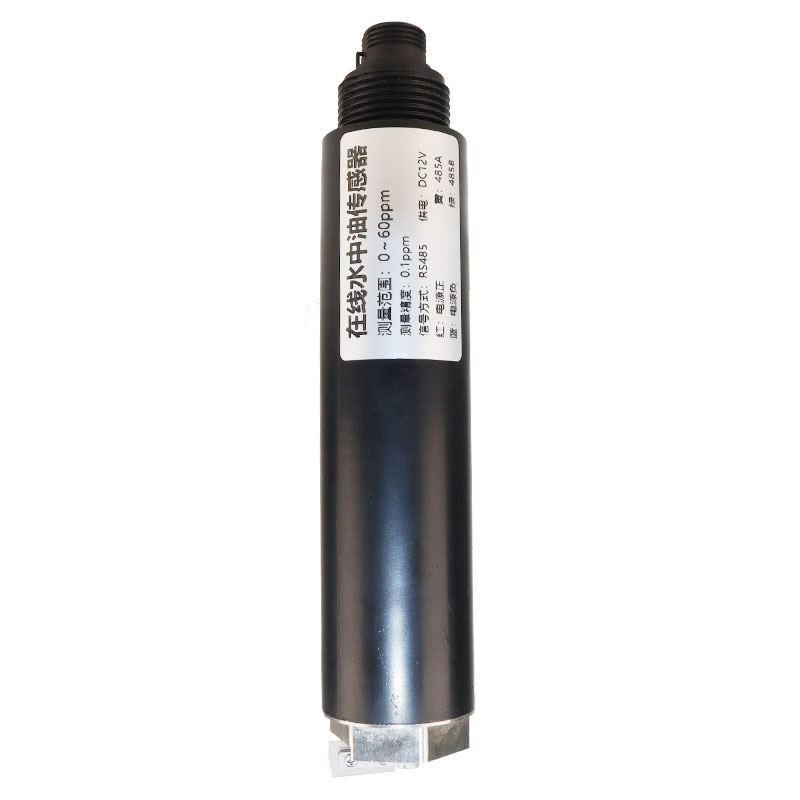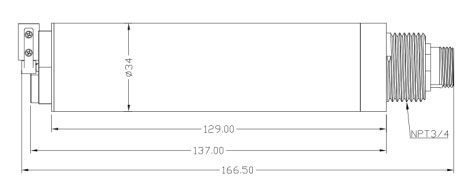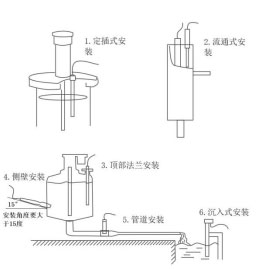Tianyi Sensor IOT Technology Co., Ltd
Sales Manager:Ms. Emily Wang
Cel,Whatsapp,Wechat:+86 15898932201
Email:info@fengtutec.com
Add:No. 155 Optoelectronic Industry Accelerator, Gaoxin District, Weifang, Shandong, China

Sales Manager:Ms. Emily Wang
Cel,Whatsapp,Wechat:+86 15898932201
Email:info@fengtutec.com
Add:No. 155 Optoelectronic Industry Accelerator, Gaoxin District, Weifang, Shandong, China

Model:FT-S17S
Brand:tianyi
one.Oil in Water Analyzer Application Environment Description
Oil in Water Analyzer uses fluorescence to provide a continuous and accurate measurement of oil concentration in water and is used to detect the presence of very small oil droplets in a water stream.Oil in Water Analyzer uses the characteristics of soluble oil to have absorption peaks and emission peaks in the spectrum.When the spectral absorption peak of soluble oil emits monochromatic light and irradiates it into water, the soluble oil absorbs the energy of monochromatic light and releases another kind of monochromatic light with a wavelength emission peak.The light intensity emitted by soluble oil is proportional to the content of soluble oil in water.The sensor is easy to install and easy to use.
Signal output: RS485 (MODBUS-RTU).
Filter detection, strong anti-interference ability.
Internal signal isolation technology has strong interference.
Good reproducibility, thermal stability, low drift, small size, fast response speed
Easy to install, simple, 3/4NPT pipe threads, easy to sink-in installation or install in pipes and tanks
Stable performance and long service life
IP68 waterproof standard
two.Oil in Water Analyzer Technical Performance and Specifications
1.Technical parameters
| Measurement principle | Fluorescence method |
| Signal method | RS485 (MODBUS-RTU) |
| Measurement range | 0~60ppm |
| Detection limit | Decide based on actual oil samples |
| Accuracy | 0.1ppm |
| Measure resolution | 0.01ppm |
| Housing material | Glass and 316L stainless steel |
| Cable length | Standard 5 meters |
| Power supply voltage | 12-24VDC |
| Product power consumption | 12V power supply: When the cleaning brush is not working, the product power consumption is about 0.5W, and when the cleaning brush is working, the product power consumption is about 1.5W |
| Calibration method | Two-point calibration |
| Measurement environment | Temperature 0~50℃ (no freezing), <0.2MPa |
| Waterproof grade | IP68 |
| Installation method | Immersive mounting, NPT3/4 thread |
2.Oil in Water Analyzer size diagram

three.Oil in Water Analyzer Installation and Electrical Connection
1.Oil in Water Analyzer installation

Installation distance requirements: Keep it more than 5cm from the side wall and more than 10cm from the bottom.
Installation environment: Cannot work in strong light, try to be in a dark environment.No other fluorescent substances that can be excited can be present.
2.Electrical installation
The cable is a 4-core shielded wire, and the line sequence is defined:
Red - Power cord (12~24VDC)
Blue-ground (GND)
Green-485B, Yellow-485A
Before powering on, carefully check the wiring sequence to avoid unnecessary losses caused by wiring errors.
Note: The color of the cable may vary slightly depending on the production batch.The specific color of the cable is subject to the silk screen printing.
4.Oil in Water Analyzer Maintenance and Maintenance
1.Use and maintain
The sensor's measurement window is one of the key components to ensure the normal operation and accurate measurement of the sensor.Its cleaning requirements are crucial to ensure the accuracy and reliability of the measurement.
1.1 Maintenance method
1.Regular cleaning: The measurement window should be cleaned regularly to remove dirt, sediment and other impurities attached to the surface.The cleaning frequency depends on the measurement environment, but daily or weekly cleaning is generally recommended.
2.Use gentle detergent: When cleaning, you should choose gentle detergents and avoid using cleaners containing abrasives or acid-base ingredients to prevent damage to the surface of the measurement window.
3.Soft cloth or sponge: During the cleaning process, use a soft cloth or sponge to gently wipe the surface of the measurement window to prevent scratches or wear.
4.Avoid direct contact: Avoid touching the measuring window surface directly during cleaning to reduce fingerprint and grease contamination.
5.Rinse: After cleaning is completed, the measurement window should be thoroughly rinsed with clean water to ensure that residual detergent and dirt are removed.
6.Dry: After cleaning, gently wipe the surface of the measuring window using a dry soft cloth to remove water stains and ensure complete dryness.
7.Regular inspection: Regularly check the surface of the measurement window for damage or wear to keep the sensor running normally.
8.Avoid exposure to chemicals and high temperature environments: Avoid exposing the measurement window to harmful chemicals or high temperature environments to prevent damage or corrosion to its surface.
When the sensor has a long service life, it can be calibrated and corrected by matching the instrument.When the sensor is maintained and maintained by the above method, it means that the sensor has failed.Please replace the sensor.
1.2 Things to note
1.The measurement window contains glass components, so use sharp or hard objects to scratch the surface to prevent scratches and damage.
2.It contains sensitive optical components and precision electronic equipment inside to avoid exposing the sensor to violent vibration or impact, so as to prevent the displacement or damage of the optical parts and electronic equipment.No maintenance is required inside the equipment.
3.When not in use, appropriate dust covers or covers should be used to protect the optical parts from dust and contaminants.
Under the general trend of technology empowering agriculture, Agricultural meteorological stations are gradually becoming key facilities for ensuring agricultural production and promoting the modernization of agriculture.It can conduct real-time and precise monitoring of various meteorological...
Laser methane telemeter, leveraging laser technology, is used to detect the concentration of methane gas in the environment and has been widely applied in natural gas stations, the petroleum and petrochemical industry, the metallurgical industry, the power industry and other places.According to diff...
Soil salinity refers to the total amount of various soluble salts contained in the soil. Imagine that the soil is like a large container filled with a variety of substances, and soil salinity is one of these substances. These salts mainly accumulate gradually during the soil formation process from s...
Traditional weather stations mostly use mechanical devices such as wind speed and direction indicators to measure meteorological elements. These devices have some limitations. For example, mechanical components are prone to wear and icing, requiring regular maintenance and calibration. Moreover, the...